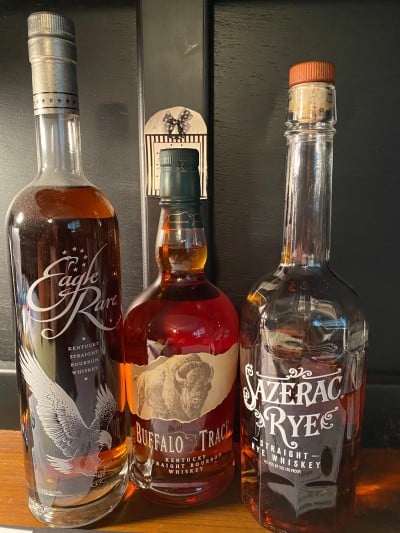 Sixty-two different and unique bottles of brown liquor.
Sixty-two different and unique bottles of brown liquor.
That’s right…I said 62.
Which one should I select?
I can certainly use price as a differentiator, but that might not provide an accurate choice. I could make the selection based upon several different quality factors like, what’s in the mash bill? How long has it been aged? I could easily be romanticized by the origin stories of many of the brands. None of that, however, will make my selection any easier.
The Buffalo Trace Distillery is the most awarded, and by many, the most highly regarded distiller of bourbon in the country. But if you go to the company website, you will be overwhelmed by that first number. There are 62 choices on the website, all with different brands and different names. But if you haven’t had the pleasure of sampling some of the spirits listed (okay, I’ve done more than ‘sample’) you won’t know whether or not it’s worth chasing the elusive Pappy Van Winkle for upwards of $2,000 or starting with the flagship bourbon, Buffalo Trace.
How do you market your products when you offer 21 different brands under the mothership’s name? For many small business owners, offering 21 different brands is unheard of and not thought of. It’s too much. It’s overwhelming. But what if you offer more than one product under more than one brand?
Perhaps you offer three different types of air conditioning units by three different manufacturers. How do you sell that to a prospective customer? How do you convince a customer that one unit is better than the other? Does offering multiple products and brands hamper your ability to make the sale because of confusion and lack of differentiation?
Another conundrum is, by offering a variety of products under different brands, are you pulled by various factors to promote one brand over another? Is it more profitable for your company if you sell more widgets from a certain producer? Or are they all equal and, thus, represented equally by you and your colleagues to customers?
In an article about Brand differentiation on Inc.com, the spirits offered by Buffalo Trace would be considered “Endorsed Brands” where each bourbon has some universal similarities, yet each has a distinct identity separate from the others. Each also leverages the well-known Buffalo Trace name, which improves brand awareness and has an endorsing quality. A cited example is Marriot with its JW Marriot, Residence Inn, and Ritz Carlton sub-brands.
The key to operating in this structure is the nuts and bolts of what every business should be doing on a consistent basis – research and survey the specific market, where do the challenges lie, test the product in the market and learn about and know your customers.
Buffalo Trace differentiates its offerings on its homepage and on the first few pages of the website. A six-minute video on the homepage gives an overview of the company and the distillery. The next landing page elaborates on a lengthy timeline detailing how the distillery came to be and how some of its products were developed. A third landing page celebrates the legendary people that many of the spirits are named for, and why those individuals are important to the industry, not just the company. About the fourth page into the site, they begin offering descriptions and some historical detail about the various products.
Buffalo Trace also boasts about the many significant awards that the distillery has won, and that lends additional credibility to their products. It also convinces consumers that whatever is produced at that distillery is worth whatever they’re charging for it.
If your company offers multiple products in similar categories, how are you creating differentiation? Are you telling unique and compelling stories? Are you testing the market and gaining helpful insight about your customers?
If you need help with those tasks, give me a call, and I’ll assemble the right team to tackle those challenges.
- He Didn’t Have to Do It - December 22, 2025
- We Got a Freebie - December 2, 2025
- Do You Keep Your Promises? - November 20, 2025
